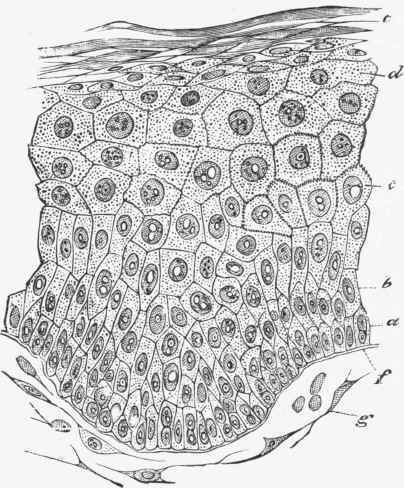You’re here because you want to fix your foreskin. If it doesn’t retract all the way by the time you hit puberty, join the crowd. You are part of 1% of men for which this happens. Most of them don’t mind, and some don’t even realize they are different. But a non-retractile foreskin can get in the way of experiencing the full joy of sex. For some it only needs to be a few millimetres larger, and for others (like me) it needs to expand from a tiny pinhole. Retraction may seem unobtainable.
Skin is a remarkably adaptable organ. 

 All of the above feats were accomplished the same way: with gradual, persistent, gentle stretching.
All of the above feats were accomplished the same way: with gradual, persistent, gentle stretching.
What is skin?
Your foreskin is made of layers of different cells and connective tissue. Aside from skin cells, it’s packed with nerve endings, mucous membranes, and strong muscle tissue. You can’t control this muscle, but you can feel its effects. It contracts when it gets cold.  Skin is layers of cells. The upper layers are the epidermis. The cells of the epidermis have hard, strong walls and fats between them to keep bad things out of your body. About a dozen layers below the epidermis lies the dermis — a mixture of different cells that help give skin structure. Fibroblasts, for example, exude collagen — a fibrous protein that helps pull everything together. Collagen gives skin its tightness. As people age, they produce less collagen, their skin stops snapping back when you pull it, and they get wrinkles.
Skin is layers of cells. The upper layers are the epidermis. The cells of the epidermis have hard, strong walls and fats between them to keep bad things out of your body. About a dozen layers below the epidermis lies the dermis — a mixture of different cells that help give skin structure. Fibroblasts, for example, exude collagen — a fibrous protein that helps pull everything together. Collagen gives skin its tightness. As people age, they produce less collagen, their skin stops snapping back when you pull it, and they get wrinkles.  Here’s a section of foreskin up close:
Here’s a section of foreskin up close:
Near the bottom, some cells are dividing. They are undergoing mitosis. The epidermis is constantly replaced, as cells migrate up from the lower layers, every 48 hours or so. When you stretch skin, the cells flatten. But skin cells don’t like to be stretched out. During the time they are bent out of shape, they are more likely to begin mitosis (cellular division). This signalling method is called mechanotransduction.
To modify your skin, you will need to stretch it gently for as long as possible each day, without damaging it. This will stimulate new cell growth.
Corticosteroids and skin stretching
Many studies about fixing phimosis have found that you can get the best results with stretching in combination with a topical corticosteroid. If you use cream without stretching, probably nothing will happen. Stretch without cream, and you’ll need to do it for longer to see results. Here’s where things get confusing. Corticosteriods have a devastating effect on skin. Seconds after they are applied, the epidermis will start to atrophy. Old cells shrink, and new cells will tend to divide more slowly. Since it is not being replaced, the epidermis — the hard upper layer, will grow thinner.
Here’s where things get confusing. Corticosteriods have a devastating effect on skin. Seconds after they are applied, the epidermis will start to atrophy. Old cells shrink, and new cells will tend to divide more slowly. Since it is not being replaced, the epidermis — the hard upper layer, will grow thinner.
This seems counter-productive. When stretching, you want to promote growth, not inhibit it. However, corticosteroids have another important effect. The fibroblast cells in the dermis will also stop producing collagen. As the old collagen breaks down, the skin begins to resemble that of an elderly person. It becomes thinner, looser, and very pliable. Collagen production is suppressed for at least two weeks after application of a corticosteroid. If, during that time, you can stimulate some cell growth, you will have a long-term gain in skin surface area.
Gentle stretching and steroids
Gentle stretching and steroid creams are the first thing to try when resolving non-retracting foreskin. In many studies in children, 90% of the cases are resolved. With adults, it will take persistence, and a daily routine of stretching for several months.
How exactly? I’ll explain that in my next post.
Follow me on twitter @PhimosisJourney to get a stream of entertaining updates on my penis.
